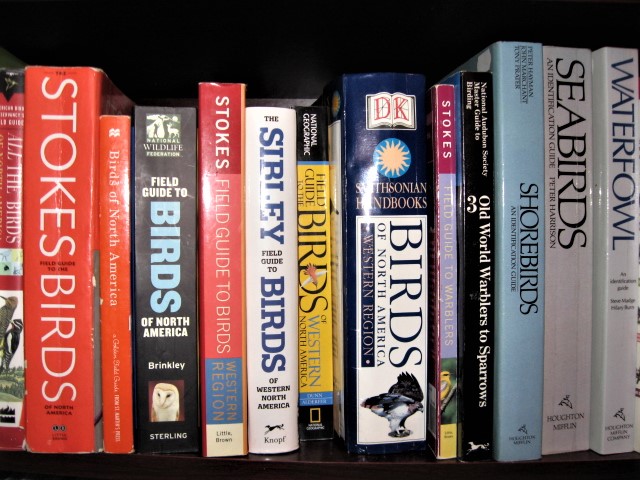
1. Up-to-date
Make sure the book is a relatively new edition. Names and other information about birds change often. Former Species are sometimes split into two new birds. An old book could cause you to miss out on a lifer.
2. Size
How big is the book? Some so-called field guides are too big and heavy to carry around in the field whilst searching for birds. The National Wildlife Federation Field Guide to Birds of North America and The Stokes Field Guide to North America are two examples. While these are wonderful reference books to acquire for your birding library, they are simply too big and heavy to carry around in your pocket or backpack.
3. Layout
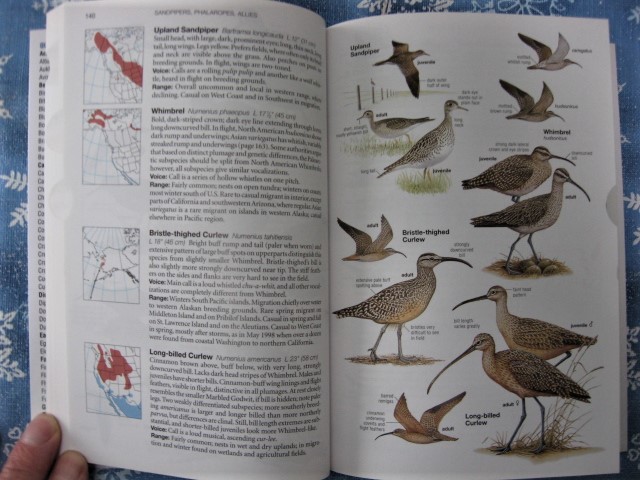
The standard format for bird guide layout is to have photos or illustrations on the right when you open the book and the text and range maps on the left. Some books are laid out in columns with two columns per page. This allows side-by-side comparison with another bird. It is a matter of preference. The fewer birds per page, the better. However, this might make the book too large, so a compromise is needed. Four birds per page is ideal.
4. Quality of Images
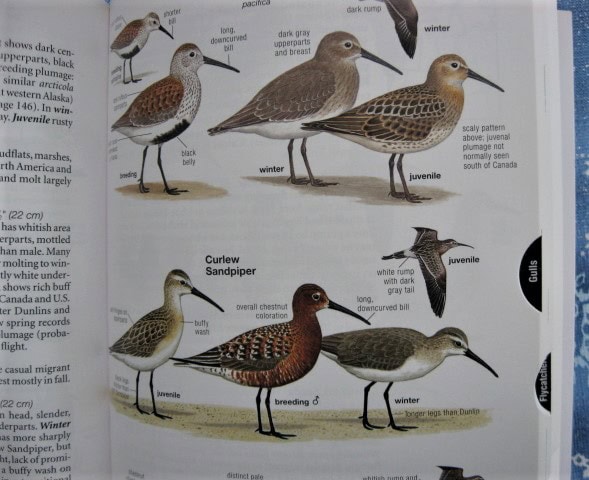
Some books utilize photographs, and others have illustrations. Both are fine, and this is mostly a matter of preference as long as the photos or drawings are of sufficient quality. Drawings must be accurate, high-quality, and depict the correct colour and shade. The printing quality is also essential.
The book should have several views of each species: one each for males, females (unless they look alike), juveniles, non-breeding plumage, and birds in flight.
National Geographic books seem to have the best illustrations. National Wildlife Federation and Stokes are best for photographs.
5. Maps
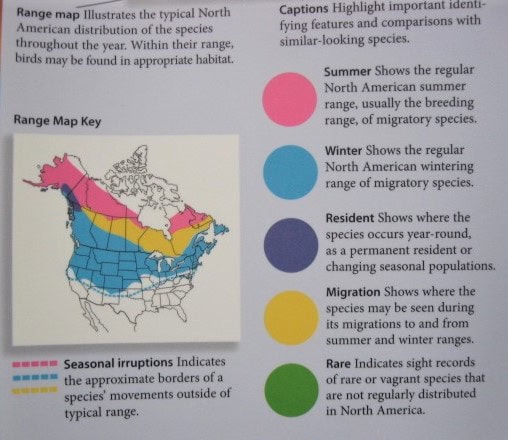
The maps should tell you four things:
the migration areas
the breeding range
the year-round range
the winter range
Beware of books that have the maps at the back of the book and not together with the birds. Some books have the maps located at the top or the bottom of the page instead of directly opposite the bird. If this is the case, it must be easy to determine which map goes with which bird. The National Wildlife Federation Field Guide shows the four main areas on the map, plus green spots for places to find rare birds (photo). The best arrangement is to have the maps beside the bird or below if the book is printed in columns.
6. Text and Taxonomic Order
Do you want a lot of information about each species or just the basic facts? More information is good; however, it takes up space in the book. A good guidebook needs to compromise between too little and too much information. A large amount of text can turn a field guide into a heavy home reference book. DK books are excellent sources of information but too big to carry in the field.
The text should also include the scientific name and, if you are birding in a non-English country, the bird’s name in the local language.
Consider the taxonomic order of birds. The names and species differ in the Clements, IOC, or AOU lists. If the book uses a checklist different from yours, you could miss out on a lifer.
7. Similar Species
Information about species that are very similar in appearance to the one you are looking at is very useful. Not too many books have this feature. This information may be more valuable in the field than a large amount of text about the bird’s habits. The information could be in the form of text, illustrations or both.
8. The Index
Besides the typical index at the back, does the book have any features to make finding your bird easier? Some books have separate indexes for English, Scientific and local languages. This really makes it easier to look up the bird you want than having everything in a single index.
If you are birding in a non-English-speaking country, having an index in the local language so that local people can assist you in identifying a bird is very helpful.
Does the index have any separations, such as family names in bold? This helps to find groups of bird families quickly if you don’t know the name of the bird you want to see but know the family that it belongs to. Otherwise, you must search through a long list of names in alphabetical order, with all species, families, and scientific names mixed together.
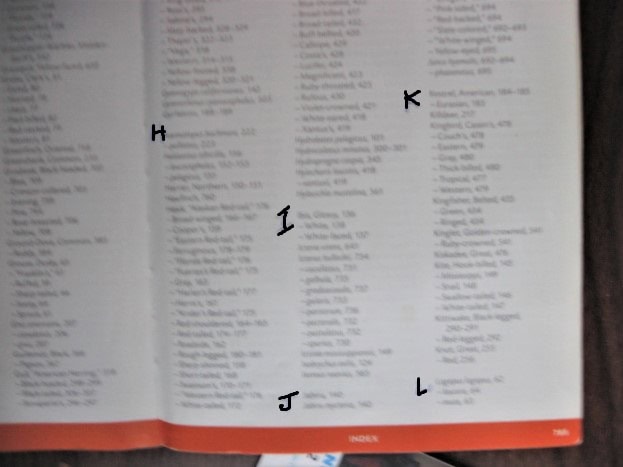
If an index has no separations, I print a large black letter of the alphabet in the margin to speed up finding the bird you want.
9. Additional Information
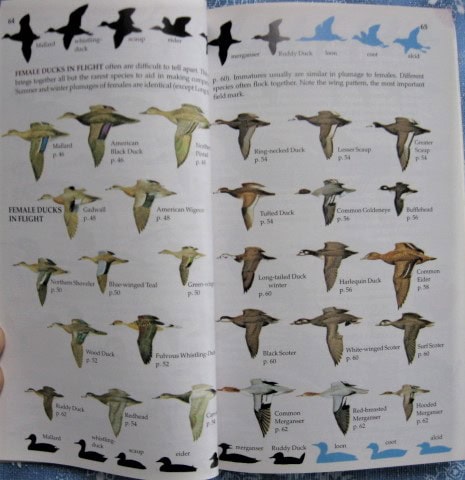
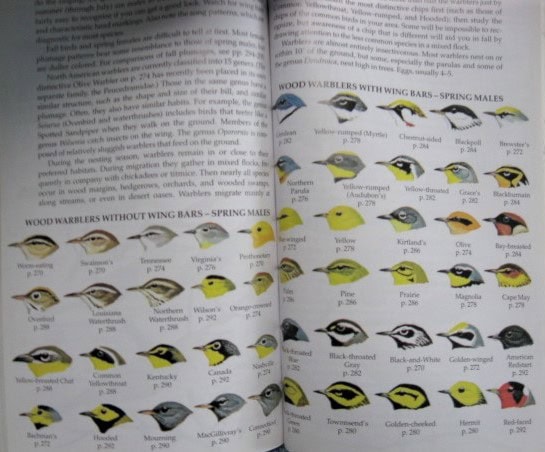
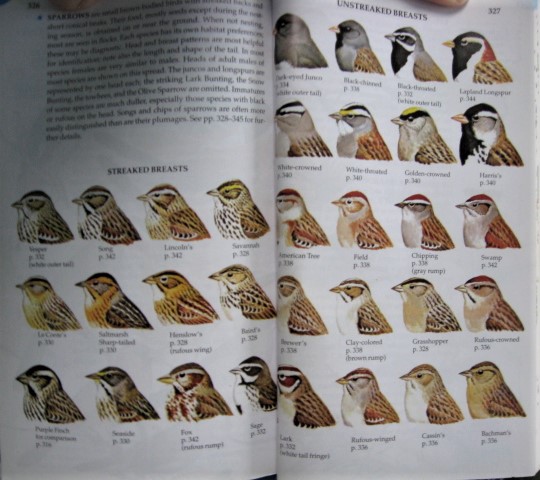
Does the book have any bonus features to help you identify birds besides everything mentioned above? The images above show family groups using photos instead of words. This is in addition to the regular index.

In addition to the index, this book has colour-coded pages with different colours for each family group.
Examples can be another index inside the front or back cover that lists page numbers by family instead of species. Some books have a different colour tab for each family, and a few have indented tabs.
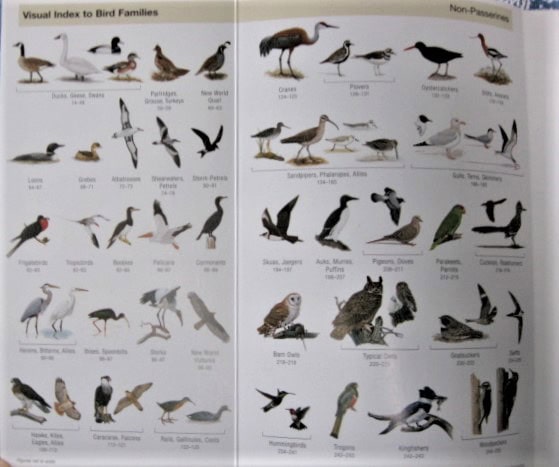
In addition to the regular index, this book has an index using a picture of a typical bird from each family. You can very quickly find the pages for owls, for example. Even if you don’t know the name of the bird family you want, you can still use this index instead of searching through the whole book for a bird. This is from a National Geographic book.
10. Print Quality
Finally, how well is the book made? Is it of good or poor quality? Will it withstand a lot of use in the field? Are the pages printed on cheap paper?